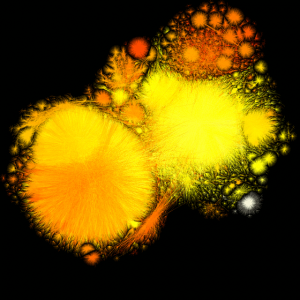People distribute attention according to a power-law distribution.
Power-laws have long been associated with distribution of quantity of links individuals in social networks have. My on-going research suggests that power-laws not only describe distributions at the network level, they also describe distribution at the individual level. We communicate in a power-law distribution with our contacts, by frequency. Initial analysis also suggests we spend time communicating with each other according to a power-law.
The distribution analysis for frequency was conducted across six social networks of various types ranging in size from fewer than 100, to more than 6,000 individuals. Most SN research has been conducted on smaller networks (fewer than 100 individuals); so testing across a wide range of sizes both confirms earlier results and suggests that size is not a factor in the power-law distribution. I was concerned about possible distortion on small networks due to implications from Dunbar’s Number. It turns out that small networks are indeed different, which I am not going to go into here, but they still fit these distributions.
Analysis on any complete sub-set, will still fit these pattern. By complete, I mean that connections between any two individuals in the sub-set, must be the same as in the whole set. The value is the introduction of the ability to sample, and to operate over a network recursively. Similarly, much information can be gained about a larger network, even if the data you have is incomplete.
This distribution may allow us to accurately predict impact of changes to any social network. By measuring the current state, we can estimate the impact of adding/removing people and connections. This could be of tremendous value pursuing in any social goal creating by facilitating cohesion, culture, and the like.
I intend on publishing the results and methodology. If you are looking for that level of detail you’ll have to wait, but mail me (erich at howweknowus.com) if you would like to discuss.
